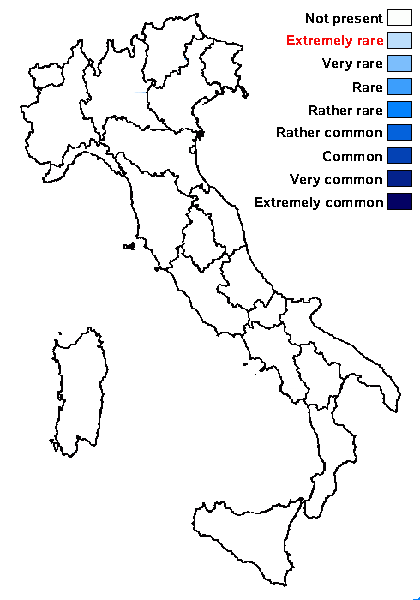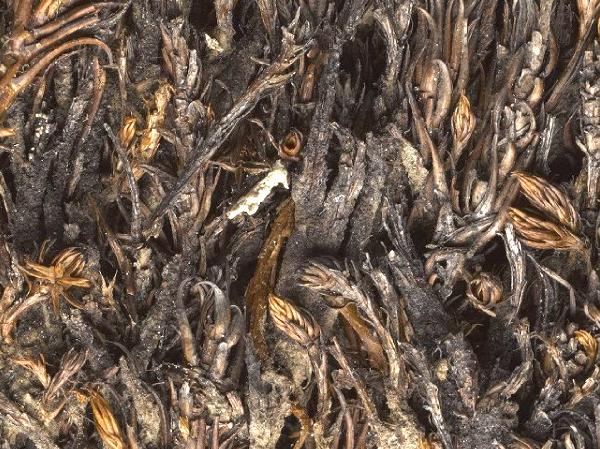Lecidea polytrichinella Hertel, Obermayer & Poelt
in Obermayer & Poelt, Acta Bot. Fenn., 150: 139, 1994
Synonyms:
Distribution:
Description: Thallus crustose, endosubstratic and inapparent or thinly episubstratic and consisting of small, whitish areoles, developing on the leaflets of Polytrichum. Apothecia biatorine, 0.1-0.3 mm across, pale to dark brown, sometimes blackish brown, with a strongly convex, hemispherical disc, soon immarginate. Proper exciple thin, brownish, of radially arranged hyphae; epithecium brown; hymenium colourless to pale brown, 25-35 μm high; paraphyses strongly coherent, stout, branched in upper third, the apical cells clavate, with a brown cap; hypothecium pale brown. Asci 8-spored, short-clavate, approaching the Biatora-type. Ascospores 1-celled, hyaline, ellipsoid, 6-7.5(-8) x 2.5-3.5 μm. Photobiont chlorococcoid, the cells (15-)18-22 μm wide. Spot tests: thallus (when well-developed) K+ yellow, C+ red, KC+ red, P- or P+ yellow; apothecial sections C+ red. Chemistry: alectorialic acid (major), sometimes with traces of barbatolic acid. Note: a tiny species of unclear relationships, encrusting leaflets of moribund Polytrichum in the subalpine and alpine belts, often together with Lecanora leptacinella; overall distribution arctic to temperate-alpine; widespread in the Alps but rarely collected and probably overlooked; to be looked for in the Italian Alps.
Growth form: Crustose
Substrata: soil, terricolous mosses, and plant debris
Photobiont: green algae other than Trentepohlia
Reproductive strategy: mainly sexual

Predictive model
Growth form: Crustose
Substrata: soil, terricolous mosses, and plant debris
Photobiont: green algae other than Trentepohlia
Reproductive strategy: mainly sexual

Predictive model
 INDEX FUNGORUM
INDEX FUNGORUM
 GBIF
GBIF


